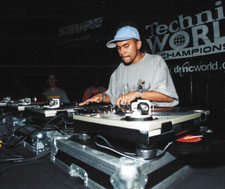|
Mixtapes | DJ Services & Designs: The Worlds Best Mixtapes By World Class Mixtape Producer & Nightclub DJ Emir Santana, Denver's Mixtape King
|
|||||||||||||||||||||||||||||||||||||
DJ Emir Mixtapes: Denver & WorldwideMixtapes DJ Services: Denver & WorldwideNightclub DJ Flyer Designs & Graphic Design ServicesDesign Services Mixtapes and Merchandise StoreMixtapes MixtapesMixtapes Parties and PicturesDenver Nightlife DJ Emir Social Media LinksDJ Emir Facebook Fan Page Hip Hop Music LinksHip Hop Music Themed Mixtapes2013 Mixtape Denver DJ Emir SantanaDJ Emir is a world class mixtape producer and nightclub DJ. You can find him at the best nightclubs in Denver and around the world. for Denver DJ Bookings, National DJ Bookings and International DJ Bookings Call: 303 995-0875 For Flyer Designs Call Or Email:
Hire One of Denver's Best DJs Today, Call DJ Emir to make your next event hot: 303 -995-0875 |
History Of Turntablism And DJ Music
A Brief History ofTurntablism
Music Recordings Begin To Emerge 1870's - Thomas Edison begins to develop a tinfoil phonograph or speaking machine. The machine included a cardboard cylinder wrapped in tinfoil on a threaded axle. A mouthpiece and diaphragm were connected to a stylus that embossed the sound waves on the tinfoil. To play back the recording, a reproducer replaced the mouthpiece. To test the invention for the first time, Edison recited "Mary Had a Little Lamb" into the mouthpiece. 1876 - Elisha Gray invents the Musical Telegraph. Alexander Graham Bell beats him to the patent office and patents the technology, calling it a graphophone. 1877 - Edison unveils the first hand-cranked phonograph. 1878 - Edison patents the phonograph and intends it to be an office machine. 1887 - Bell's graphophone used wax cylinders and included a floating stylus for clearer sound. Edison improves the phonograph by using a solid wax cylinder and a battery-driven motor to replace the original hand crank. 1890 - Musicians begin recording their music. The cylinders of the phonograph had the ability to record 2-4 minutes of audio. Around 1890, musicians began to record their sessions by setting up several phonographs to record at the same time. 1892 - Flat recording discs are invented; the first of which is called the gramophone disc. 1895 - Edison begins mass production of the phonograph and continues to improve the original design by adding a large horn to amplify the sound. 1901 - The Victor Talking Machine Company of New Jersey is incorporated, and the first Victor gramophones is introduced. 1906 - A new Victor gramaphone was introduced, which featured a concealed (inside) horn. It was dubbed the Victrola. 1919 - Invention of the Theremin, by Leon Theremin (Lev Sergeivitch Termen). The Theremin is considered the predecessor to the Moog Synthesizer. It is unique in that it is the first musical instrument that can be played without being touched. 1920's - The first electronic instruments appear. Theremin, Ondes Martenot and Trautonium 1925 - Electrical amplification (the microphone) was introduced. This invention forced engineers to re-design reproducers. The Victor Company's answer to this revolution in sound was the Orthophonic Sound Box, which was very sensitive to high and low frequencies. 1931 - EMI researcher Alan Dower Blumlein invents stereophonic sound for recording. 1939 - Invention of the magnetic tape. John Cage composes imaginary Landscape #1: the first piece to use electronic reproduction. The piece was performed on variable-speed turntables with RCA test tones and other sounds. The First DJs Back To Top Of Page During WWII, persons armed with a turntable, an armful of records, and a basic amplifier would entertain troops in mess halls, spinning Glen Miller, the Andrews sisters, and Benny Goodman. It was much easier than sending an entire band overseas. 1950s - Invention of the 45 RPM 7 inch records. 45 RPM records were cheaper to make and easier for American youths to carry to parties. In Jamaica, as popularity of Jazz and R'n B increases, sound systems are used to promote the music. Sound systems developed from enterprising record shop disc jockeys with reliable American connections for 45s. They would load a pair of hefty PA speakers into a pickup truck and tour the island from hilltop to savannah, spinning the latest hits. 1951 - John Cage composes imaginary Landscape #4: the first piece to use radios as instruments. 1956 - Ska develops in Jamaica, which makes the sound system explode in popularity. Karlheinz Stockhausen's 'Gesang der Junglinge' uses both natural sounds and electronically generated noises. Duke Reid and Clement Dodd emerge as sound system operators in Jamaica. 1958 - Invention of the E-Piano 1959 - Artist begin conducting recording sessions that center on sound systems. Duke Reid held his first recording session. This included the duo Chuck and Dobby, and the Jiving Juniors. He also recorded Derrick Morgan and Eric Morris for sound system play. Clement Dodd also held his first recording session recording over a dozen tracks with artists like Alton (Ellis) and Eddie (Perkins), Theophilius Beckford, Beresford Ricketts and Lascelles Perkins. 1960's - During the 1960's, modern electronics enters the music domain. The first Moog Synthesizer hits the market created by Robert Moog. New concepts and sounds begin to be used in music composition, such as mathematically based compositions by Arnold Schonberg and Erik Satie and "machine" sound by Luigi Russolo. The late 1960's brought the birth of Dub music and the first remixes pioneered by King Tubby. 1960 - The "afterbeat" and "syncopation" concepts are born. Prince Buster and Voice of the People begin to emphasize the afterbeat, which became the essence of Jamaican syncopation. 1966 - Rocksteady comes onto the scene in Jamaica. 1967 - Stockhausen Telemusik uses shortwave radio as instruments to create a "world music." Late 60's - reggae takes over Rock Steady Foundations for remix and rap music emerge. Lee "Scratch" Perry, Edward "Bunny" Lee and Osbourne Ruddock (King Tubby) begin operating multi-track studios; they become major reggae producers. 1968 - King Tubby develops cutting In his position as master cutter for Duke Reid, King Tubby regularly cut acetates (soft wax discs) that were designed exclusively for his own, and a few other, sound systems. When he left out portions of the vocal on a 'dub plate', (the local term for the acetate disc) he effectively created a new 'version' of a song. The Birth Of Hiphop Back To Top Of Page
"Toasting" begins in dance halls - considered to be a direct link to rap music. Technics introduced the Direct Drive System, SP-10 Early 70's - Technics released the original SL-1200 as a hi-fi turntable. Giorgio Moroder is considered to be the pioneer of pro-synthesizer electronic disco music. 1971 - Ralf Hutter, Florian Schneider & Co. form Kraftwerk - the first electronic band. 1975 - Grand Wizard Theodore discovers the scratch. 1979 - Sugarhill Gang's "Rapper's Delight" is released. While they didn't really utilize the skills of a DJ, this song had a profound influence on the sound of commercial hip-hop during the early 1980's. Late 70's - Technics does some work on 1200s turntables by improving the motor, redesigning the casing, and adding a separate ground wire and pitch control. It releases it as the sl-1200. 1980's - While playing at a club called the Warehouse, DJ Frankie Knuckles lays down drum machine-generated 4/4 beats on top of soul and disco tunes. Marshall Jefferson develops a deep, melodic sound that relied on big strings and pounding piano. The result was 'Move Your Body' which became the house record of 1986. 12" disco records that included long percussion breaks (ideal for mixing) contribute to the emergence of House Music. Grandmaster Flash is one of the first DJs to utilize the "breaks" of certain songs which when looped in a table to table fashion created the "breakbeat". 1980 - Roland introduces the TB-303 bassline machine and the TR-808 drum machine. 1981 - Grandmaster Flash's 1981 single "The Adventures of Grandmaster Flash on the Wheels of Steel" was Grandmaster Flash and The Furious Five's first record to demonstrate hip-hop deejaying skills 1982 - Afrika Bambaata's "Planet Rock" samples Kraftwerk and creates electro. Grandmaster Flash and the Furious Five's "The Message" becomes a hit. "The Message" is seen by many as the first serious rap record. 1982 - Davy DMX's "One For the Treble" is released 1983 - Grandmaster D.S.T.'s "Megamix" is released Herbie Hancock's "Rockit" featuring cuts and scratches by Grandmaster D.S.T. brings turntablism to a much wider audience Mid 80s - First affordable samplers (Akai s900) hit the market, which enable musicians to capture and manipulate existing sounds. Other Hip-hop DJs in New York begin to use the spinback capabilities of the Technics 1200 turntable for "scratching", and to extend grooves and "breaks" by cutting back and forth between 2 copies of the same record as first exhibited by Grandmaster Flash. 1987 - The DMC (Disco Mix Club) holds its first annual DJ Competition 1989 - The rave scene develops. The rave scene came out of Acid House and became so big that promoters came up with the idea of putting on huge events in the countryside outside London - events that held thousands of people and went on all night.
The Creation of Turntablism- The Turntable As An Instrument early 90s - Breakbeat emerges and produces Drum 'n Bass and Trip Hop. Breakbeat, a descendent of Techno, has origins of Hip-Hop frenetic beats and high pitch samples. There are many variations of breakbeats: Darkside, Jungle and the most popular, Drum 'n Bass. Trip Hop has roots in breakbeat and ambient and is a montage of beats, vocals, guitar & bass strings, and jazzy elements. Steve Dee, strongly influenced by DJ Barry B. "The Cut Professor" from the Get Fresh Crew begins experimenting with "The Funk" which further develops and comes to be know as "beat juggling", or "remixing right before your eyes." He later founds the X-men who begin utilizing the style and take beat juggling to a higher level. 1990 - Mix Master Mike, and DJ Apollo form the first all turntable skratch band called "Shadow of the Prophet". They were the DJs for a rap group named F.M.2.0. and performed at various, radio shows and venues in the Bay Area. 1991 - Scratch DJ Innovator/Perfectionist DJ QBert gains worldwide attention in the Technics DMC DJ Championships 1992 - DJ Flare introduces the "Flare" skratch QBert, Mix Master Mike, and Apollo dubbed as the "Rocksteady DJ's" by Crazy Legs. 1992 also marks the year of the first skratch / battle record that was designed for ease of kutting and tricks because of the samples being on beat one after the other with no pause or lag time. It was called "Battlebreaks". The idea was then given to Darth Fader and the rest is history. 1994 - Shortkut, Disk, and QBert form the band, "Tern Tabel Dragunz" and perform at local Hip-Hop events around the Bay during 94'. Shortkut Wins the Rap Pages DJ Battle in L.A. Strongly influenced by Steve Dee and the X-men, he also introduces his patented "Strobe" juggling technique and later in 94', wins the Technics DMC west coast championships. Qbert's mixtape "Demolition Pumpkin Squeeze Musik" (dubbed by Rap Pages as the greatest Mixtape of all time) ignites the fire of the experimental skratch / mixtape revolution. DJ Shadow releases "In/Flux" further fueling the movement towards a more sampler oriented movement in turntablism 1995 - Perhaps the winningest competition DJs ever, Qbert and Mix Master Mike retire from the DMC to become judges and enter a new challenge, the creation of music with turntables. Mix Master Mike and Disk unknowingly create the name "Invisibl Skratch Piklz" for the crew by jokingly throwing out hundreds of goofy names for bands. 1995 also marked the birth of the first "all samples skratched song" by QBert entitled, "Invasion of the Octopus People" which starts another phase in turntablist culture. With the help of Shortkut's initial introduction to them in 95', ISP became the first DJ band to be sponsored by, then a small manufacturer of DJ products, "Vestax". With the help of ISP's designs like the PMC 05 pro, 06 pro, 07 Pro and 05 Pro ltd., Vestax has now captured first place as the world's leader in sales of mixers and become the biggest DJ product company. 1996 - The I.T.F. (International Turntablist Federation) holds it's first world champioinship competitions Showcasing the new era of turntablism, the historic battle at the Rocksteady Reunion between ISP and the X-Men (now called the X-Ececutioners) took place. QBert gets filmed as a starring role in the movie, "Hang the DJ", which gets picked up by Miramax and plays in theatres in Europe, Canada, and the U.S. ISP recorded the classic turntable orchestrated piece, "Invisibl Skratch Piklz Vs. Da Klamz uv Deth", on Vinyl. 1997 - Turntable T.V. was born on March 23, 1997 (the day of the Lunar Eclipse) and has now turned into an international turntablist video magazine featuring the Piklz practicing and hanging out with DJs from all over the world showing off their talents, skills, tips, tricks, and other turntable entertainment. ISP filmed the educational and hilarious "Turntable Mechanics Workshop" for Vestax (check out tracoman.com). In this video, skratches were more publicly defined and given names so that turntablists may now share a mutual "skratch Language". 1998 - Yogafrog creates and gives away the first ISP music grant to aspiring artists in the Bay Area. Mix Master Mike Joins the "Beastie Boys" in 98' and brings skratching to the eyes of the mainstream. QBert Receives a lifetime acheivement award from the DMC mid to late 90s - Individual DJs and crews such as the Invisibl Skratch Piklz, BulletProof Scratch Hamsters/Space Travelers, Allies, Supernatural Turntable Artists, Fifth Platoon, Beat Junkies, 1200 Hobos, Scratch Perverts, X-Men/X-Ecutioners, Cosmic Crew, and many others continue to expand on the frontiers of turntablism as an artform.
The New Millenium 2000 And Up- in 1998, 1999 and 2000 DJ Craze not only takes the DMC World Tittle Guitar Center starts a nationwide DJ Spinoff competition in The United States, and Stanton starts a family friendly Battle competition banning profanity in the sets. Leading to more originality and innovasion. The Future is written- or so they say.
|














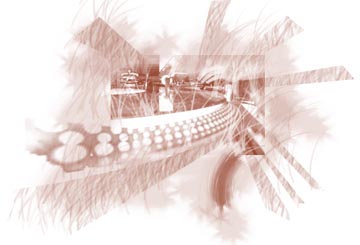


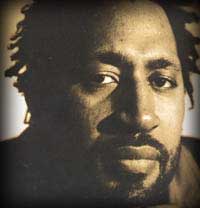 1969 - Kool Herc, considered to be the first hip-hop DJ develops "Cutting Breaks." Kool Herc adapted his style by chanting over the instrumental or percussion sections of the day's popular songs. Because these breaks were relatively short, he learned to extend them indefinitely by using an audio mixer and two identical records in which he continuously replaced the desired segment. His particular skill, later copied by many others, was to meld the percussion breaks from two identical records by playing the break over and over switching from one deck to the other. Hip hop derived from "hip hoppin" on the turntable.
1969 - Kool Herc, considered to be the first hip-hop DJ develops "Cutting Breaks." Kool Herc adapted his style by chanting over the instrumental or percussion sections of the day's popular songs. Because these breaks were relatively short, he learned to extend them indefinitely by using an audio mixer and two identical records in which he continuously replaced the desired segment. His particular skill, later copied by many others, was to meld the percussion breaks from two identical records by playing the break over and over switching from one deck to the other. Hip hop derived from "hip hoppin" on the turntable.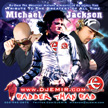
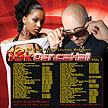
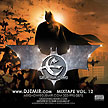
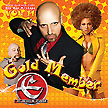
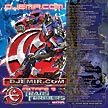
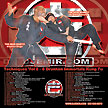
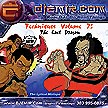
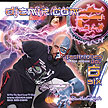

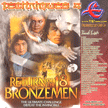
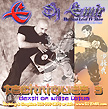
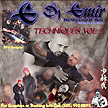
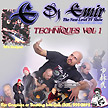

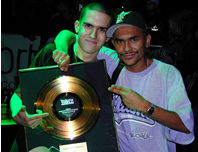 DJ Atrack Becomes the youngest DMC world Champion at age 13! Shown here a few years later taking the World DMC Team Championship Title with DJ Craze!
DJ Atrack Becomes the youngest DMC world Champion at age 13! Shown here a few years later taking the World DMC Team Championship Title with DJ Craze!